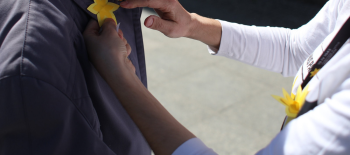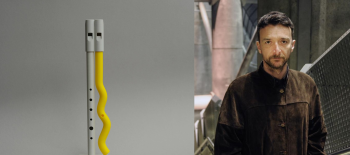Brussels Centre of Fine Arts (BOZAR) is holding the exhibition The Sultan’s World. The Ottoman Orient in Renaissance Art from 27 February until 31 May 2015. Exhibition, coproduced by the NATIONAL MUSEUM IN KRAKOW is to be seen in KraKow from 26 June until 27 September 2015 (under the titleOttomania. Osmański Orient w sztuce renesansu).
Krakow, capital of Poland during the period which forms the subject of the exhibition, seat of the court and thus a veritable breeding ground for artists, played a very important role in terms of contacts between the Ottoman Empire and central Europe. So it’s no surprise to discover the sublime armour of Stefan BATORY (King of Poland from 1575 until 1586), conserved at the Vienna Kunsthistorisches Museum, or a magnificent liturgical robe from the Monstary of the Canons Regular of the Lateran.
>>> Practical information
Exhibition organised under the honorary patronage of the President of the Republic of Poland Bronisław Komorowski and their Royal Highnesses the King and Queen of the Belgians.
In partnership with the POLISH INSTITUT IN BRUSSELS.
The Ottoman Empire, which ruled over Constantinople since the latter’s fall in 1453, was extremely fascintating for Western society during the Renaissance. During this period, which was a shining moment in the field of the arts and sciences, in particular thanks to the flourishing of humanist thinking, European culture, which was in full flight, came face to face with a culture with which it seemed to have nothing in common. Nevertheless, in spite of the threat that hung over this Ottoman society which was suddenly so close, this threat nourished a creative world which only helped to speed up cultural development. This was particularly noticeable in the geographical area which came into contact with the newly-established empire: East-central Europe, which at the time extended from the Kingdom of Poland (and later the Republic of the Two Nations) to the Italian republics, taking in along the way the Habsburg territories and the Kingdom of Hungary. They were the filter, via the war of course, as well as through trade and the arts, through which Ottoman culture flowed (as well as the Western view of this same culture), a culture which reached the farthest shores, such as the Netherlands or the German empire. The pictorial art was heavily dependent on this surge in inspiration: great European plastic artists, such as Bellini, Dürer, Memling, or Titian, Veronese or Tintoretto, depicted their impressions of the Ottoman world.
It’s worth noting that the National Museum, Krakow is the Polish museum that carries out the most projects which are cofinanced by the European Union and by partners with great expertise in the field of exhibitions. In 2011, the museum worked with BOZAR, for the exhibtion The Power of Fantasy. Modern and Contemporary Art from Poland.
|
In Poland, the influence of the Ottoman empire on the nobility (szlachta) made itself very much known from the XVIth century onwards, notably in clothing. Here is a representation of a traditional nobleman’s costume worn by men, on which one can see the żupan (belted robe with long sleeves), worn under a kontusz (baggy dress-robe with decorative value) held together by an ornamental belt (pas kontuszowy) to which a curved sabre (karabela) is attached.
|
 |
drawing: “Szlachcic polski”, Jean-Pierre Norblin de La Gourdaine, vers 1790, National Museum in Warsaw, drawing cabinet
PRACTICAL INFORMATION
>>> Center for Fine Arts – BOZAR (Rue Ravensteinstreet 23, 1000 Brussels) – see map
>>> 27 February > 31 May 2015
>>> €12 | €10 (BOZARfriends, 18>25, 67+, groups) | €6 (12>18) | €1,25 (art. 27) | free (0<6)
curators: dr. Guido Messling, dr. Robert Born and Michał Dziewulski
+++ this exhibition on the BOZAR site
This exhibition is organised in the context of the international project “Ottomans and Europeans”, which puts the cultural ties between Europe and the Ottoman Empire/Turkey in the spotlight.
+++ www.ottomans-europeans.eu
Links
Bozar Expo: http://www.bozar.be
Muzeum Narodowe w Krakowie: http://mnk.pl/



